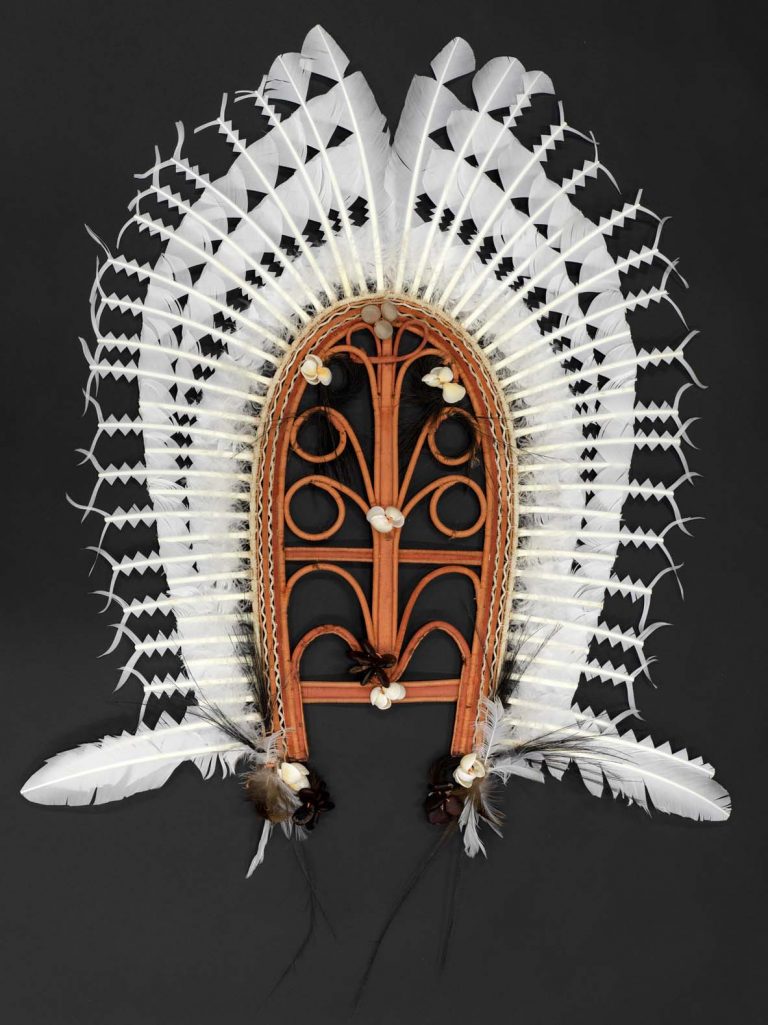We acknowledge the Traditional Owners of the land on which the Queensland Art Gallery | Gallery of Modern Art stands and recognise the creative contribution First Australians make to the art and culture of this country.

George Nona / Kala Lagaw Ya people / Australia b.1971 / Ceremonial Dhoeri 2008 / Cane, bamboo, string with natural pigment, beeswax, shell, seed, eagle, cassowary and pheasant feathers / 101 x 70 x 8cm / Purchased 2009 through the Queensland Government’s Gallery of Modern Art Acquisitions Fund / Collection: Queensland Art Gallery | Gallery of Modern Art / © George Nona
George NonaCeremonial dhoeri 2008
Not Currently on Display
Anchored in the functionality of traditional Torres Strait material culture, George Nona’s dhoeris represent the distinctive sculptural form of the Islands as well as the imagery of a society in which headhunting and inter-island raids were prevalent. Nona has consciously restricted himself to traditional materials: cane and string form the basic framework of each dhoeri, to which the artist has attached a distinctive ‘fan’ of feathers, the stiffness of which indicates the warrior is entering into battle. The feathers are cut in traditional diamond patterns, terminating in fishtail ends.
Shells, ochres mined from Badu and black cassowary feathers obtained through trade with Papua New Guinea complete the composite structure. The link to tradition is, however, tempered by Nona’s own artistic innovations. While grounded in the cultural rules of dhoeri design, Nona consciously pushes the traditional restrictions and boundaries, incorporating his own experimental artistic style into the objects and shifting, at the same time, the works into a contemporary, non-Indigenous art setting
While dhoeris are still extensively used in the Torres Strait, primarily within the context of dance, Nona is one of a very select group of artists to have consciously removed them from the performance arena and re-positioned them as visual art objects in their own right.
Having grown up without knowledge of his own Western Torres Strait styles of dhoeri (headdress) and accustomed to seeing cardboard cut-outs worn by dancers, George Nona decided to investigate these Torres Strait icons.
Researching books, photographic archives and rock paintings, Nona discovered some 28 dhoeri — many of which have not been made for over 70 years — made specifically for war, and has revived the practice of creating them. Each shows the hallmarks of traditional dhoeri, with diamond designs disrupting perfect white feathered manes. The larger sizes and more elaborate designs reflect a hierarchy of warriors, consistent with military regalia in all cultures.
Nona has altered some elements, making each dhoeri identifiably his own and creating new interpretations in the spirit of the traditional headdresses, now used for performance rather than war.